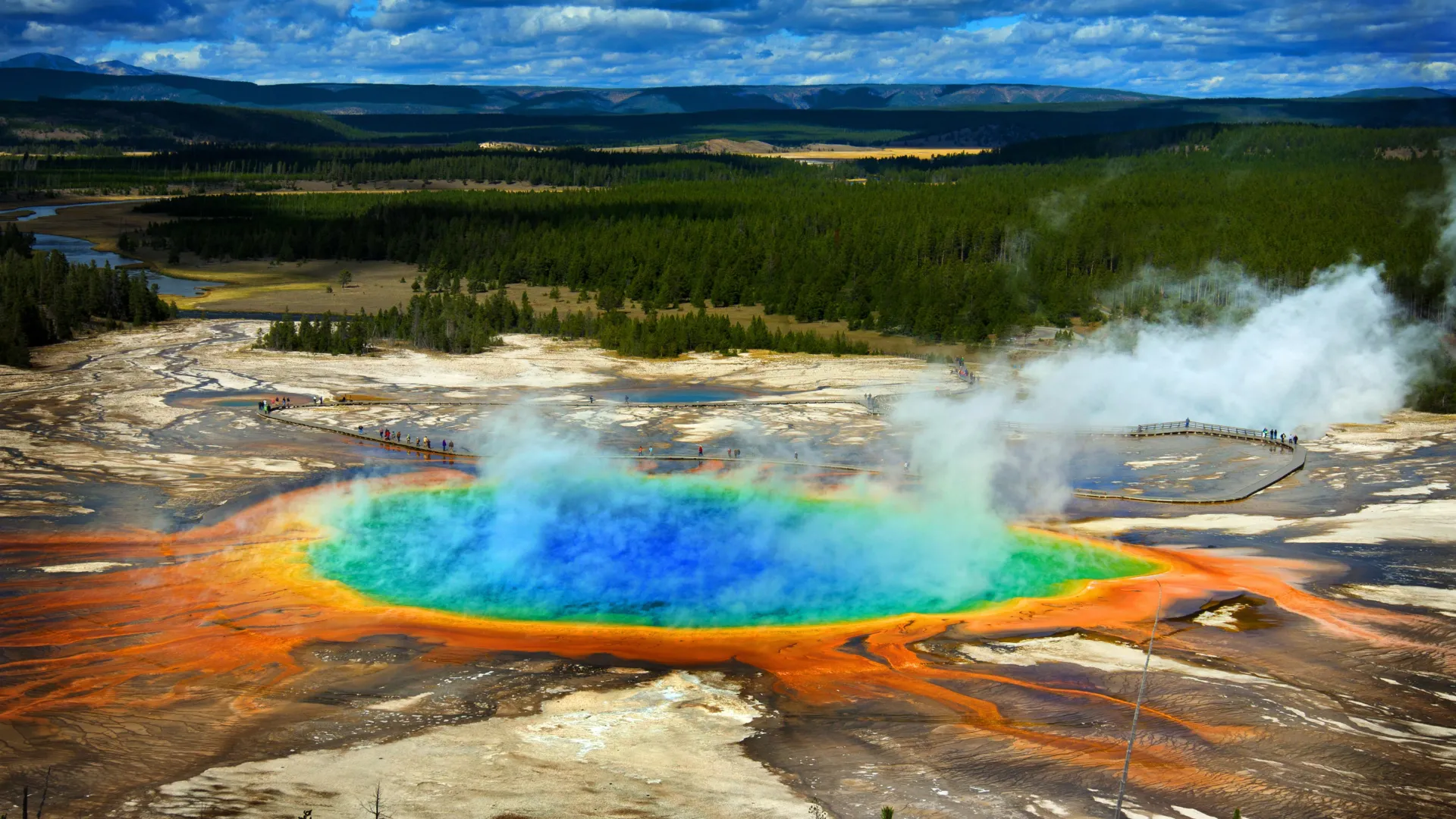AI uncovers 86,000 hidden earthquakes beneath Yellowstone’s surface
Researchers detect, designate 10 times more earthquakes than previously recorded.
- Date:
- July 21, 2025
- Source:
- University of Western Ontario
- Summary:
- Beneath Yellowstone’s stunning surface lies a hyperactive seismic world, now better understood thanks to machine learning. Researchers have uncovered over 86,000 earthquakes—10 times more than previously known—revealing chaotic swarms moving along rough, young fault lines. With these new insights, we’re getting closer to decoding Earth’s volcanic heartbeat and improving how we predict and manage volcanic and geothermal hazards.
- Share:

Yellowstone, a popular tourist destination and namesake of an equally popular TV show, was the first-ever national park in the United States. And bubbling beneath it - to this day - is one of Earth's most seismically active networks of volcanic activity.
In a new study, published July 18 in the high impact journal Science Advances, Western engineering professor Bing Li and his collaborators at Universidad Industrial de Santander (Industrial University of Santander) in Colombia and the United States Geological Survey used machine learning to re-examine historical earthquake data from the Yellowstone caldera over a 15-year period. The team was able to retroactively detect and assign magnitudes to approximately 10 times more seismic events, or earthquakes, than previously recorded.
A caldera - like the one at Yellowstone Park spanning parts of Wyoming, Idaho and Montana - is a large depression or hollow formed when a volcano erupts and the magma chamber beneath it empties, leading to the collapse of the land above. This is different than a volcanic crater, which is formed by outward blasting.
The historical catalogue for the Yellowstone caldera now contains 86,276 earthquakes spanning the years 2008 to 2022, significantly improving previous understanding of volcanic and seismic systems through better data collection and systematic analyses.
A key finding in the study is that more than half of the earthquakes recorded in Yellowstone were part of earthquake swarms - groups of small, interconnected earthquakes that spread and shift within a relatively small area over a relatively short period of time. This is unlike an aftershock, which is a smaller earthquake that follows a larger mainshock in the same general area.
"While Yellowstone and other volcanoes each have unique features, the hope is that these insights can be applied elsewhere," said Li, an expert in fluid-induced earthquakes and rock mechanics. "By understanding patterns of seismicity, like earthquake swarms, we can improve safety measures, better inform the public about potential risks, and even guide geothermal energy development away from danger in areas with promising heat flow."
Molten-detecting machines
Prior to the application of machine learning, earthquakes were generally detected through manual inspection by trained experts. This process takes time, is cost-intensive and often detects fewer events than possible now with machine learning. Machine learning has sparked a data-mining gold rush in recent years as seismologists revisit the wealth of historical waveform data stored in datacenters across the world and learn more about current and previously unknown seismic regions around the world.
"If we had to do it old school with someone manually clicking through all this data looking for earthquakes, you couldn't do it. It's not scalable," said Li.
The study also shows that earthquake swarms beneath the Yellowstone caldera have occurred along relatively immature, rougher fault structures, compared to more typical mature fault structures seen in regions such as southern California and even immediately outside the caldera.
The roughness was measured by characterizing earthquakes as fractals, which are geometric shapes that exhibit self-similarity, meaning they appear similar at different scales. First visualized by Benoit Mandelbrot in 1980, fractal patterns are seen in coastlines, snowflakes, broccoli, and even the branching of blood vessels. The fractal-based models, targeting roughness versus regularity, were able to characterize these earthquake swarms, which the researchers believe were caused by the mix of slowly moving underground water and sudden bursts of fluid.
"To a large extent, there is no systematic understanding of how one earthquake triggers another in a swarm. We can only indirectly measure space and time between events," said Li. "But now, we have a far more robust catalogue of seismic activity under the Yellowstone caldera, and we can apply statistical methods that help us quantify and find new swarms that we haven't seen before, study them, and see what we can learn from them."
Story Source:
Materials provided by University of Western Ontario. Note: Content may be edited for style and length.
Journal Reference:
- Manuel A. Florez, Bing Q. Li, David R. Shelly, Mia V. Angulo, José D. Sanabria-Gómez. Long-term dynamics of earthquake swarms in the Yellowstone caldera. Science Advances, 2025; 11 (29) DOI: 10.1126/sciadv.adv6484
Cite This Page: